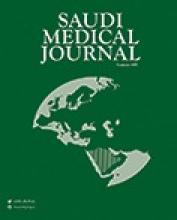Abstract
OBJECTIVES: To evaluate the efficacy of combined infiltrative bupivacaine with low intraperitoneal pressure insufflation in reducing the post-laparoscopic pain in patients undergoing laparoscopic cholecystectomy (LC).
METHODS: This randomized prospective single-blind study included 473 patients undergoing LC. The study took place at University Hospital Center Mother Teresa, Tirana, Albania between January 2006 to September 2009. The patients were divided in 4 groups: Group 1 (n=120) with intra-abdominal insufflation pressure 15 mm Hg and no infiltrative bupivacaine (HPNBG); Group 2 (n=122) with intra-abdominal insufflation pressure 15 mm Hg and with 5 ml infiltrative bupivacaine 0.5% in abdominal minincisions (HPBG); Group 3 (n=110) with intra-abdominal insufflation pressure under 10 mm Hg and no infiltrative bupivacaine (LPNBG); and Group 4 (n=121) with intra-abdominal insufflation pressure under 10 mm Hg and infiltrative bupivacaine (LPBG).
RESULTS: There were statistically significant differences (p=0.003) between groups regarding incisional pain intensity, between LPBG and HPNBG (p=0.001), between LPBG and HPBG (p=0.037), between LPBG and LPNBG (p=0.001), as well the shoulder-tip pain intensity (p=0.001); between LPBG and HPNBG (p=0.001), between LPBG and HPBG (p=0.001), and between LPBG and LPNBG (p=0.031). We found statistically significant differences related to pain beginning time (ANOVA test, p=0.027); between LPBG and HPNBG (p=0.041), between LPBG and HPBG (p=0.031), and between LPBG and LPNBG (p=0.05).
CONCLUSIONS: The combination of infiltrative bupivacaine with low intraperitoneal pressure insufflation shows to be more efficient in reducing the post-laparoscopic pain, compared with other regimens.
- Copyright: © Saudi Medical Journal
This is an open-access article distributed under the terms of the Creative Commons Attribution-Noncommercial License (CC BY-NC), which permits unrestricted use, distribution, and reproduction in any medium, provided the original work is properly cited.






